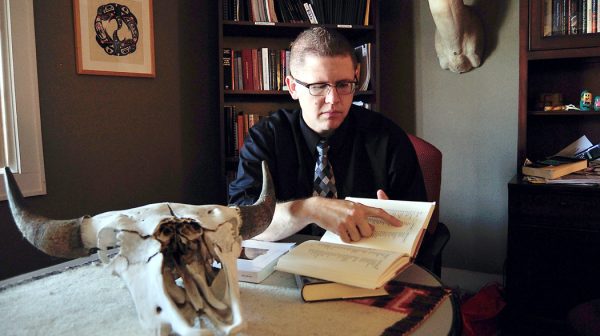The linguistic journal Diachronica published a study by Mark Harvey of University of Newcastle and Robert Mailhammer from Western Sydney University. Their paper addresses the linguistic diversity of Australian languages. Around the time of British settlement in 1788, there were over 200 languages spoken on the continent. That number has dwindled to an estimated 120 indigenous languages still existing, ... Continue Reading →
The Yamnaya Horsemen & Root of Proto-Indo-European Language
Proto-Indo-European or PIE is the term coined for a ancestral language to the group of languages from Europe and parts of Asia, like English, Spanish, Hindi, Russian and Persian. No written record of PIE exists. We infer PIE because many of these languages have similar words, like mother, indicating they share a common root language.... Continue Reading →
The Discovery of Jedek, An Unknown Language Discovered in Southeast Asia
Per Linguistic Society of America’s latest count, there are about 7,000 distinct human languages on Earth, with more becoming extinct everyday. In an effort to preserve as much cultural knowledge of our world's linguistic heritage, there are many efforts to document endangered languages, like DoBES' Tongues of Semang project. The Tongues of Semang project aims to specifically... Continue Reading →
Untangling The Ancient Khipu Code Of Strings
Last week in Current Anthropology, University of St. Andrews anthropologist Sabine Hyland, published, "Writing with Twisted Cords: The Inscriptive Capacity of Andean Khipus," which is her study of khipus. Khipus are twisted, tied cords left behind by Andean peoples. The best known understanding thru the archaeological record are the use of khipus in the Inca Empire.... Continue Reading →
Have you ever wondered what language sounded like in the past? In the mid-19th century, actually 1868, German linguist, August Schleicher, published his Compendium of the Comparative Grammar of the Indo-European Languages. Schleicher attempted to reconstruct the Proto-Indo-European language, or PIE, in the form of a fable, an auditory experiment, called “The Sheep and the Horses," or... Continue Reading →
Jolyana Begay-Kroupa (@jolyanab), a Stanford language lecturer, hopes to digitize 300 reels of tape, holding thousands of hours of Navajo oral history. These tapes were likely recorded in the '60's, on reels, perhaps 1968, when funding from the Federal Office of Economic Opportunity – was used to begin recording oral histories. Misplaced and never cataloged, only to... Continue Reading →
Using Technology to Save Endangered Languages
There are many endangered languages in our collective linguistic radar. Some of them have been covered here before and some haven't. In 2007, Joshua Hinson of Chickasaw heritage, identified that his language was one the brink of extinction. Rather than blaming technology as contributing source to language loss, Hinson embraced the opportunity to use technology to help save his... Continue Reading →
Marie’s Dictionary
This short documentary tells the story of Marie Wilcox, the last fluent speaker of the Wukchumni language and the dictionary she created in an effort to keep her language alive.
Light Warlpiri, A Newly Discovered Australian Mixed Language
Linguist Carmel O'Shannessy wrote to the journal Language of a newly discovered language, Light Warlpiri. Her correspondence, "The role of multiple sources in the formation of an innovative auxiliary category in Light Warlpiri, a new Australian mixed language," documents 300 people in a remote desert community about 644 kilometres from Katherine, a town in Australia’s... Continue Reading →
Google Supports The Endangered Languages Project
On this site, we've covered endangered languages before, and in doing so we discussed the challenges faced in trying to preserve these priceless forms of cultural heritage and expression. It is a daunting task. I am happy to announce that Google has decided to help out the cause by funding and launching the Endangered Languages Project. The... Continue Reading →





You must be logged in to post a comment.